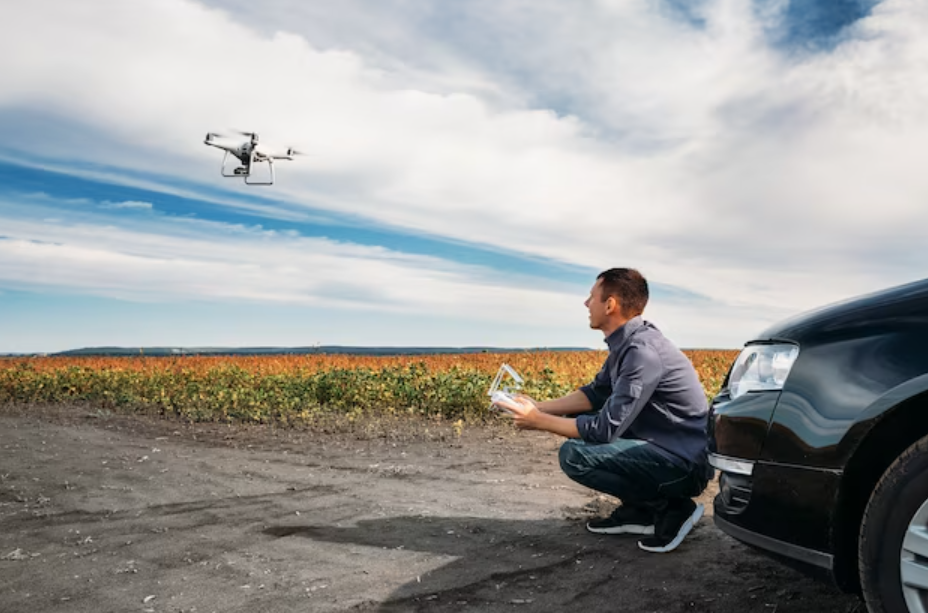
Drone technology has seen a significant surge in recent years, transforming various industries from photography to agriculture. While this new technology offers incredible opportunities, it's essential to be aware of the rules and regulations governing drone usage in different countries. In this comprehensive guide, we'll cover the regulations for the USA, Canada, UK, Europe, and South America, helping you understand what's required to fly drones in these regions.
USA

Federal Aviation Administration (FAA) Regulations:
1. Registration: Drones weighing between 0.55 to 55 pounds must be registered with the FAA.
2. Fly Below 400 Feet: Maintain an altitude below 400 feet to avoid manned aircraft.
3. Stay Clear of Airports: Obtain authorization for flying within 5 miles of an airport.
4. Fly During Daylight or Civil Twilight: Special lighting is required during civil twilight.
5. Visual Line-of-Sight (VLOS): The drone must always be within sight.
6. Avoid No-Fly Zones: Respect restricted areas.
7. Compliance with Part 107: Commercial users must follow the Part 107 regulations, including obtaining a Remote Pilot Certificate.
Canada

Transport Canada Regulations:
1. Drone Classification: Drones are categorized into Micro, Very Small, Small, and Large, with specific rules for each category.
2. Pilot Certification: Drone pilots must pass an exam for the appropriate category
3. Distance Restrictions: Respect distances from people, buildings, and other aircraft.
4. No-Fly Zones: Flying near emergency operations, airports, or advertised events is restricted.
5. Alcohol and Drugs: A strict policy against flying under the influence.
6. Night Operations: Special requirements are necessary for night flying.
7. Insurance: Liability insurance may be required for some operations.
United Kingdom (UK)

Civil Aviation Authority (CAA) Regulations:
1. Drone Registration: Mandatory for drones weighing over 250 grams.
2. Flyer and Operator IDs: Required for all pilots and operators.
3. Drone Code Compliance: Including maximum altitude, distance from people, and airport restrictions.
4. Privacy and Data Protection: Adherence to privacy laws and regulations.
5. Commercial Permissions: Special permissions are required for commercial activities.
6. Insurance Requirements: Commercial operators must have appropriate insurance.
Europe

European Union Aviation Safety Agency (EASA) Regulations:
1. Unified Rules: Compliance with EASA regulations is mandatory across EU member states.
2. Categories of Operation: Open, Specific, and Certified categories with unique rules.
3. Drone Registration: Required for drones weighing more than 250 grams.
4. Geo-awareness System: To notify pilots of restricted zones.
5. Environmental Protection: Compliance with noise and emission standards.
6. Liability and Insurance: Adequate insurance coverage is mandatory.
South America

South American countries have diverse regulations. Below are general trends:
1. Varied Regulations: Check local aviation authorities for specific country guidelines.
2. Registration: Often required for both recreational and commercial use.
3. Licensing: This may be necessary for commercial operations.
4. Privacy Laws: Consent is required for capturing images of private property.
5. No-Fly Zones: Including government and military areas.
Conclusion
Understanding and complying with drone regulations is paramount for safe and responsible flying. This guide provides a foundation, but always consult the local aviation authority for the most accurate, detailed, and up-to-date information on drone regulations in the USA, Canada, UK, Europe, and South America. Whether for leisure or business, flying within the bounds of the law will ensure a positive drone flying experience.
Your one stop solution for advanced drones — The Bigly Brothers!
Are you looking for a reliable and advanced drone for your aerial photography or videography needs?
Look no further than the Bigly Brothers brand. Our drones are equipped with cutting-edge technology, and we offer some of the best deals on the market. The first thing that is amazing about the Bigly Brothers is its commitment to quality.
Our drones are expertly designed and crafted to meet the highest standards of performance and durability. Our drones are equipped with advanced features like GPS positioning, obstacle avoidance systems, and high-quality cameras that allows you for stunning aerial photography and videography. But it’s not just the technology that sets Bigly Brothers apart, our customer support is also exceptional. From the moment you visit our website to the moment you receive your drone, our team is available to answer any questions you may have and provide you with the support you need. We are always willing to go the extra mile to ensure that our customers are satisfied with their purchases.
One thing that stands out about Bigly Brothers is their dedication to innovation. We are constantly pushing the boundaries of what’s possible in drone technology, and our products are always at the forefront of the industry. Whether you’re an amateur photographer looking for a reliable drone for your hobby, or a professional videographer in need of a top-of-the-line aerial platform, Bigly Brothers have a drone that’s right for you. And if you’re on a budget, don’t worry — Bigly Brothers offers some of the best deals on the market.
Our prices are competitive, and we frequently offer discounts and promotions to help you save even more. Plus, our website is user-friendly and easy to navigate, so you can find the perfect drone for your needs in no time. With our advanced technology, exceptional customer support, and competitive prices, we truly are one of the best in the business. So if you’re looking for a perfect drone, head to our shop page today and experience the difference for yourself.







